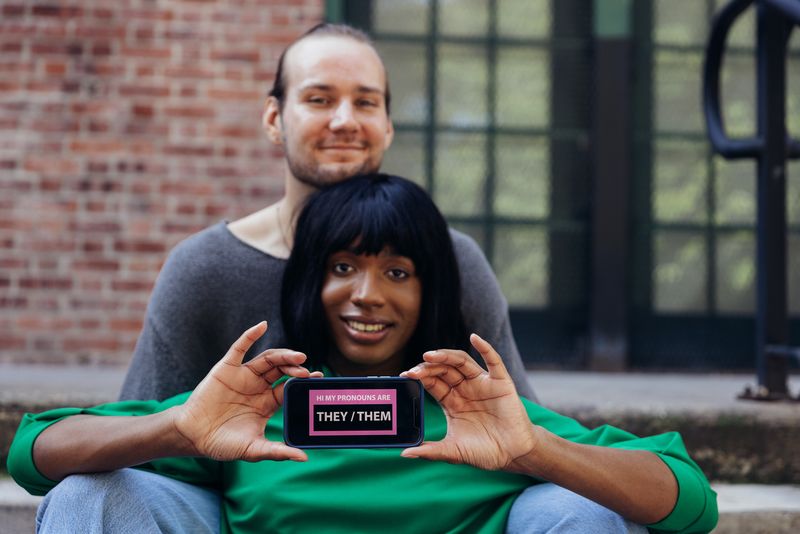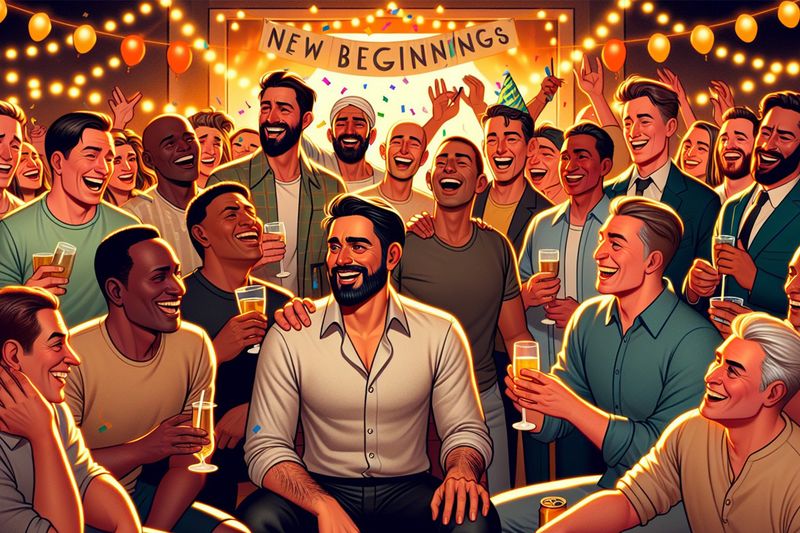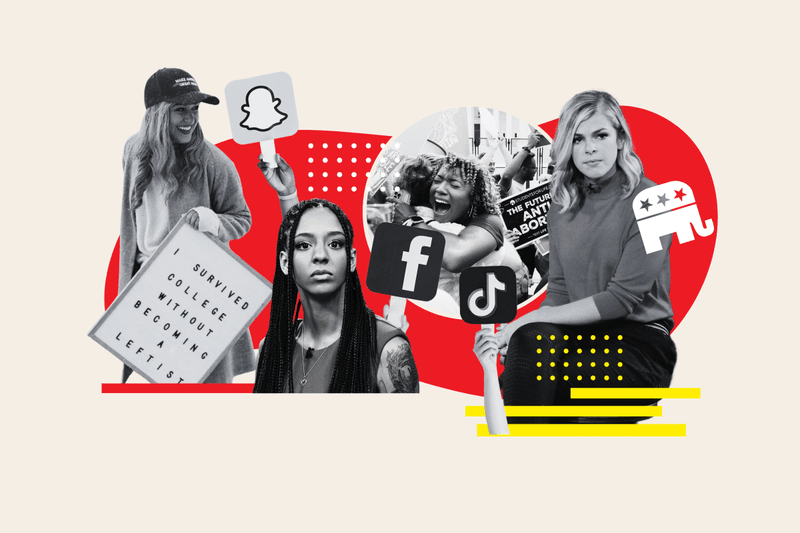In today’s rapidly evolving cultural landscape, there are numerous trends that have become synonymous with the younger generations, often leaving older folks, particularly Boomers, scratching their heads.
These modern movements, often labeled as “woke” trends, reflect a shift in societal norms and values that don’t always resonate with those who grew up in a different era.
In this post, we’ll explore 20 such trends that Boomers are likely to sidestep, shedding light on why these concepts might not align with their worldview.
1. Announcing Your Pronouns in Every Intro
In today’s interconnected world, introducing oneself with preferred pronouns has become a standard practice among younger generations. For Boomers, who grew up in a less inclusive era, this emphasis on pronoun usage can seem foreign. The practice is rooted in fostering inclusivity and respect for gender identity, values that might seem novel to those accustomed to traditional norms.
While younger individuals see this as a step towards a more understanding society, Boomers might view it as unnecessary or even confusing. The language surrounding gender has evolved dramatically, making it a challenging adaptation for some. However, understanding and accepting these pronoun introductions can bridge generational divides.
2. Paying for Subscriptions Instead of Owning Things
The shift from ownership to subscription-based services marks a significant change in consumer behavior. Younger generations are increasingly favoring subscriptions over traditional ownership, valuing access over possession. For Boomers, who grew up in a world where owning physical items was a sign of success, this trend can be puzzling.
Subscriptions offer flexibility and convenience, aligning with a lifestyle that values experiences over material goods. However, the intangible nature of digital ownership may feel unsatisfying to those who cherish tangible objects. This evolution in consumption reflects a broader cultural shift towards minimalism and sustainability, ideas that might not resonate immediately with older generations.
3. Oversharing Feelings on Social Media
For younger people, social media is a canvas for self-expression, where sharing emotions and personal stories is the norm. Boomers, on the other hand, often view such openness with skepticism, having grown up valuing privacy and restraint. The younger generation’s comfort with public displays of vulnerability can be baffling to those accustomed to keeping personal matters private.
Social media platforms encourage authenticity and connection, allowing users to find community through shared experiences. However, this openness can blur the lines between public and private life, a concept that doesn’t always sit well with older individuals. The generational gap in social media use highlights differing attitudes toward personal boundaries and community building.
4. Replacing Phone Calls with Voice Notes
Voice notes have become a popular communication tool among younger generations, offering a personal touch without the commitment of a phone call. Boomers, who grew up with telephones as the primary means of communication, may find this trend perplexing. The convenience of sending a quick voice message appeals to those who value efficiency and multitasking.
For Boomers, accustomed to the nuances of real-time conversations, voice notes can seem impersonal or even lazy. However, this communication style reflects a broader shift towards asynchronous interactions, where flexibility and brevity are prized. Understanding this evolution in communication can help bridge generational gaps, fostering better dialogue and connectivity.
5. Calling Everything a “Trauma Response”
The modern lexicon is filled with psychological terms, and “trauma response” is one such phrase that has gained popularity among younger people. For Boomers, who may not have grown up discussing mental health openly, this terminology can feel exaggerated or unwarranted. Younger generations use these terms to articulate and validate their experiences, fostering a culture of understanding and support.
However, the frequent use of “trauma response” can dilute its meaning, causing confusion for those less familiar with psychological discourse. This trend reflects a broader cultural shift towards valuing mental health and emotional awareness, concepts that may require an adjustment period for older individuals.
6. Redefining What “Work” Looks Like
The traditional 9-to-5 work model is being reimagined by younger generations, who are embracing flexible work environments and gig economy opportunities. Boomers, who often equate success with stability and structure, might find this shift challenging to comprehend. The younger workforce values autonomy, creativity, and work-life balance, prioritizing meaningful projects over rigid schedules.
For Boomers, accustomed to structured career paths, this approach can seem unorthodox or risky. However, this evolution in work culture reflects a desire for fulfillment and purpose, driving a reevaluation of what constitutes career success. As work continues to evolve, bridging the generational understanding of work-life dynamics becomes increasingly important.
7. Using “Soft Launches” for Relationships
In the age of social media, younger people have embraced the concept of “soft launches” for relationships, sharing subtle hints about new romances without full disclosure. Boomers, who might be more accustomed to straightforward relationship announcements, could find this approach puzzling. The “soft launch” allows for privacy and control over personal narratives, reflecting a nuanced approach to public sharing.
For older generations, the idea of gradually revealing a relationship can seem evasive or overly cautious. However, this trend speaks to a desire for personal space and boundary-setting in the digital age. As privacy norms evolve, understanding these subtle expressions of relationship dynamics can bridge generational perspectives.
8. Ghosting Instead of Talking Things Out
Ghosting, the act of cutting off communication without explanation, is a trend that has gained traction among younger generations. For Boomers, who grew up valuing direct communication and resolution, this behavior can seem rude or irresponsible. The anonymity and detachment afforded by digital communication have made ghosting a convenient, albeit controversial, option.
For younger individuals, ghosting may seem like an easier way to avoid confrontations or awkward conversations. However, this approach can perpetuate misunderstandings and hurt feelings, concepts that older generations might find hard to reconcile with their communication values. Bridging the gap between these differing approaches requires empathy and understanding.
9. Talking About Boundaries Like Buzzwords
The concept of boundaries has become a buzzword among younger people, reflecting a growing awareness of personal limits and self-care. For Boomers, who might not have been raised with this language, discussions around boundaries can seem trendy or superficial. Younger generations use this language to assert control over their lives, promoting healthy relationships and work environments.
While older individuals may view this focus as excessive, the emphasis on boundaries represents a shift towards prioritizing mental well-being and respect. Understanding the value placed on boundaries can help bridge generational differences, fostering communication and mutual respect across age groups.
10. Calling Pets “Fur Babies”
For younger generations, pets have become more than just animals—they’re family members, often referred to as “fur babies.” Boomers, who may have grown up with a more traditional view of pet ownership, might find this trend excessive or humorous. The language of “fur babies” reflects a deep emotional bond and a shift towards treating pets with the same care and affection as children.
While older generations might view this as anthropomorphizing, it highlights a broader cultural trend towards compassion and companionship. Embracing this perspective can foster understanding and appreciation for the evolving role of pets in modern society, bridging generational gaps in pet parenting.
11. Celebrating Divorce Like a Life Goal
In a society where personal happiness is increasingly prioritized, some younger individuals celebrate divorce as a new beginning. For Boomers, who may view marriage as a lifelong commitment, this trend can be perplexing or unsettling. Celebrating divorce marks a shift towards embracing personal growth and autonomy, reflecting changing attitudes towards relationships.
The idea of turning a traditionally somber event into a celebration can seem jarring to older generations. However, it underlines a broader cultural acceptance of diverse life paths and the pursuit of personal fulfillment. Bridging this generational divide requires empathy and an understanding of evolving perspectives on marriage and independence.
12. Canceling Plans for “Self-Care”
Self-care has become a mantra for younger generations, who often prioritize mental and emotional well-being over social obligations. For Boomers, who may have been raised to uphold commitments, canceling plans for self-care can seem self-indulgent or irresponsible. However, this trend reflects a growing awareness of the importance of personal health and balance.
Younger individuals see self-care as a vital component of a healthy lifestyle, allowing for rest and rejuvenation. While the older generation might view this as an excuse to shirk responsibilities, it underscores a shift towards valuing well-being. Understanding the motivations behind self-care can foster empathy across generations.
13. Making Your Career Your Identity
Younger people often intertwine their careers with their identities, viewing work as an extension of who they are. For Boomers, who may have seen jobs as a means to an end, this blending of personal and professional can seem all-consuming. The younger generation seeks fulfillment and purpose in their careers, prioritizing passion and growth.
While older individuals might see this as an unhealthy focus, it reflects a cultural shift towards finding meaning and satisfaction in one’s work. The blending of career and identity underscores a desire for authenticity, prompting a reevaluation of traditional career values. Bridging this gap requires understanding and respect for evolving career aspirations.
14. Replacing Friends with Online Communities
For younger generations, online communities offer a sense of belonging and connection that transcends physical boundaries. Boomers, who may have relied on face-to-face interactions, might find this reliance on digital communities puzzling. The younger generation values the diversity and inclusivity of online spaces, where friendships and support networks can flourish.
While older individuals might view this as a lack of genuine connection, online communities reflect a broader cultural shift towards global interaction and collaboration. Embracing the potential of digital friendships can foster understanding and bridge generational divides, highlighting the diverse ways people connect in the modern world.
15. Turning Every Hobby Into a Side Hustle
The entrepreneurial spirit is thriving among younger generations, who often turn hobbies into side hustles. For Boomers, who may have pursued hobbies purely for enjoyment, this trend can seem overly commercialized. The younger generation’s drive to monetize passions reflects a desire for financial independence and creative expression.
While older individuals might see this as a loss of leisure, it underscores a shift towards valuing innovation and flexibility. The rise of the gig economy has blurred the lines between work and play, prompting a reevaluation of traditional career paths. Understanding the motivations behind side hustles can bridge generational perspectives on work and leisure.
16. Prioritizing Vibes Over Values
In a world where vibes often take precedence, younger people prioritize the atmosphere over rigid values. Boomers, raised in a more structured environment, might find this emphasis on vibes rather perplexing. Younger generations seek environments that foster positivity and connection, valuing experiences over strict adherence to traditional norms.
While the older generation might see this as a lack of direction, it reflects a desire for freedom and emotional connection. Embracing this trend requires an understanding of the shifting priorities that guide younger individuals’ choices, highlighting the evolving definition of success and fulfillment.
17. Rejecting Traditional Etiquette
Traditional etiquette is being redefined by younger generations, who often challenge established norms in favor of authenticity. For Boomers, who grew up with strict social codes, this rejection of formality can seem disrespectful. Younger individuals prioritize genuine interactions over rigid etiquette, valuing openness and honesty.
While older generations might view this trend as a decline in manners, it reflects a shift towards valuing personal expression and transparency. Understanding the motivations behind these changes can foster empathy and bridge generational gaps, promoting mutual respect and acceptance of evolving social norms.
18. Making Therapy Speak a Personality
Therapy speak has become ingrained in the vernacular of younger generations, who often use psychological language in everyday conversations. For Boomers, who may not have grown up with this awareness, the prevalence of therapy terms can seem excessive or performative. Younger people embrace this language to express empathy and self-awareness, promoting mental health literacy.
While older individuals might see this as a trend, it underscores a cultural shift towards valuing emotional intelligence and understanding. Embracing this language can foster empathy and bridge generational differences, highlighting the importance of mental health in modern discourse.
19. Shaming Others for “Not Evolving”
Younger generations often champion social progress, sometimes shaming those who don’t align with their views. For Boomers, who may have experienced different societal norms, this approach can seem harsh or alienating. The younger generation’s commitment to evolution and justice reflects a desire for accountability and change.
While older individuals might view this as divisive, it highlights a commitment to progress and inclusivity. Bridging this generational divide requires empathy and understanding of the motivations behind these calls for change, fostering dialogue and collaboration across age groups.
20. Treating Opinions Like Facts
In the age of information, younger people often share opinions with the confidence of facts, blurring the lines between subjective and objective knowledge. For Boomers, who may value evidence-based discourse, this trend can be unsettling. The rise of social media platforms has amplified individual voices, challenging traditional notions of authority and expertise.
While older generations might view this as a decline in critical thinking, it reflects a cultural shift towards valuing diverse perspectives and personal narratives. Understanding the motivations behind this blending of opinions and facts can bridge generational gaps, fostering a more inclusive dialogue.





















